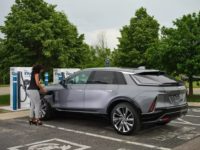Increased production of electric vehicles will drive future demand for copper, claims a recent study commissioned by the International Copper Association (ICA) and conducted by the Martec Group. Copper use in light-duty automotive applications will grow to more than 1.7 million tons annually by 2032. Simultaneously, overall copper demand related to EVs is expected to grow by 36 percent.
In the future, EVs may contain as much as 159 pounds of copper, which is significantly more than the amount of the electrically conductive material that’s currently used in internal combustion engine (ICE) vehicles (51 pounds). According to ICA, this trend demonstrates the importance of copper as a sustainable alternative to the rare-earth metals that have traditionally been popular with vehicle manufacturers.
The typical EV has three to four times more copper than traditional ICE vehicles. That’s because the material has numerous applications in EVs, including battery bus bars, electric motors, high-voltage cables and wiring harnesses.
As a result of its naturally high conductivity, copper is the ideal material for the high-speed data wires needed in vision systems and sensors. Looking ahead to 2040, the research commissioned by ICA predicts that, among a wide range of components, the wiring loom alone will account for more than 50 percent of copper demand for EVs.
Automakers and suppliers have traditionally relied on rare-earth metals for EV motors, but these controversial materials have faced increasing availability and sustainability challenges, forcing engineers to innovate and seek alternatives. Offering greater reliability and sustainability than rare-earth metals, copper has become the material of choice to increase energy efficiency in EVs due to its conductive properties.
In addition to vehicles, charging infrastructure applications will increase demand for copper in the auto industry. SAI Industrial LLC predicts the number of EV charging ports will grow from 3.2 million in 2021 to 152.3 million in 2040. This growing number of chargers is expected to result in an additional 978,000 ton of copper being needed to meet demand for charging infrastructure in 2040, a dramatic increase from the 43,300 tons used for charging ports in 2021.
Beyond electrification alone, advances in autonomous vehicle technology will lead to increased demand for copper. Vehicle automation requires multiple sensors, as well as additional on-board computers. A standard autonomous system with 12 cameras, seven lidars, eight radars and one automated driving control unit, will depend on copper connections to function safely and reliably. Each sensor and computer contain printed circuit boards, which require approximately 50 to 100 grams of copper, depending on the board’s size.



